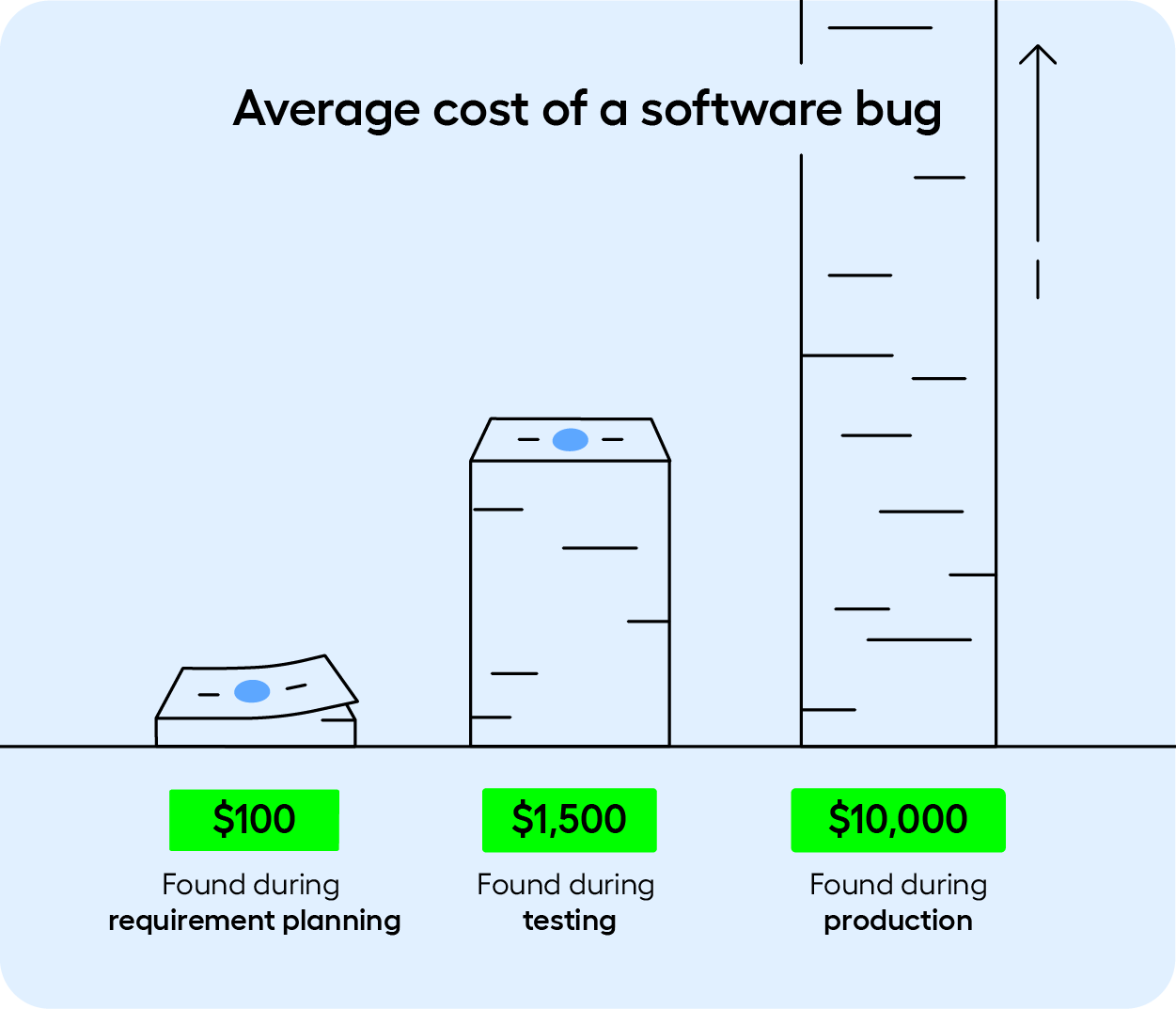SAP Regression Testing: What, Why, and How
Given SAP's role in supporting the most important business functions, from finance to supply chain, it's absolutely critical to ensure that changes to these systems don’t disrupt existing functionalities.
As SAP applications are deeply integrated with other systems, a change in one area can disrupt multiple user journeys if not tested properly. This is where SAP regression testing comes in. If you want to learn about the approach in general, read our blog on regression testing as well.
In this blog, we break down what SAP regression testing is, why it’s so important, the benefits it brings, the challenges you might face, and some best practices to make sure you’re doing it right.
Skip ahead to:
What is SAP regression testing?Why is SAP regression testing so important?
The main benefits of SAP regression testing
The main challenges of SAP regression testing
Regression testing best practices
Conclusion
What is SAP regression testing?
SAP regression testing verifies whether recent changes or updates to an SAP system have adversely impacted existing functionality.
This testing involves re-running previously executed test cases to ensure that the system continues to behave as expected without introducing any new defects.
In essence, it ensures that the stability of the SAP system is maintained even after modifications, such as patches, enhancements, or major upgrades like migrating to SAP S/4HANA. Think of it as a final check-up after any updates to ensure your system is working as well as before.
Related reading: Top 5 SAP Testing Tools of 2024
Why is SAP regression testing so important?
SAP systems are at the heartbeat of the largest businesses globally, handling the processes that make the world go round. According to SAP data, SAP customers generate 87% of total global commerce, highlighting SAP's interconnectedness with industry leaders.
Whenever you make a change to your SAP system—whether it’s an update, a customization, or a big upgrade—you want to make sure those changes don’t disrupt anything else.
Regression testing does exactly that. It helps you catch issues before they turn into bigger problems. Here’s why it’s so crucial:
- Business continuity: SAP systems support critical business processes. Ensuring that updates do not disrupt these processes is essential for maintaining business operations.
- Risk mitigation: Regression testing helps identify issues early, reducing the risk of critical failures in the production environment that could lead to significant downtime.
- Compliance assurance: Many industries using SAP, such as finance and healthcare, must adhere to strict regulatory requirements. Regression testing ensures that compliance-related functionalities remain intact after updates.
Related reading: GxP Validation: Overview and Best Practice Guide
The main benefits of SAP regression testing
When it comes to maintaining the reliability of your SAP systems, regression testing is your best friend. It ensures that after any update or change, everything still runs smoothly without disruption.
Let’s dive into the key benefits of SAP regression testing and why it’s essential for keeping your business operations on track.
- Early bug detection: By identifying and fixing bugs early in the development cycle, SAP regression testing helps prevent issues from escalating, which can be more costly and time-consuming to address later in production.
- Enhanced system stability: Regular regression testing ensures that the SAP system remains stable and reliable, even as it undergoes continuous changes or enhancements.
- Improved user confidence: Consistent and thorough regression testing builds user confidence in the SAP system, ensuring that it will perform as expected after updates, leading to higher user satisfaction.
Cost savings: Early detection of issues through regression testing can significantly reduce the costs associated with fixing defects in production, minimizing the need for emergency patches or fixes.

The main challenges of SAP regression testing
While SAP regression testing is crucial for maintaining system stability, it’s not without its hurdles.
Let’s explore the main obstacles you might face when conducting SAP regression testing and how they can impact your testing efforts.
- Complexity: SAP implementations are typically highly customized, which means that standard test cases may not be sufficient. Tailored test cases must be developed to account for the unique configurations of each SAP system.
- Vast integrations: SAP systems are often integrated with a wide range of other applications. Testing across these integrations is crucial for ensuring business continuity, making the testing process more complex.
- Resource demands: Regression testing can be resource-intensive, particularly when done manually. The volume of test cases increases over time, requiring significant effort to maintain and execute them regularly.

Related reading: From Slow to Agile: A Guide to Moving from Manual to Automated Testing
Regression testing best practices
To overcome the challenges and maximize the effectiveness of SAP regression testing, consider the following best practices:
- Automate where possible: Given the repetitive nature of regression testing, automation is key. Automated tests can be executed quickly and consistently, reducing the risk of human error and freeing up resources for more complex testing tasks.
- Prioritize high-risk areas: Focus your testing efforts on high-risk areas that are most likely to be impacted by changes, such as critical business processes, complex customizations, and integrations with other systems. When beginning regression testing, start with those that have the most impact but are the least complex. This approach allows you to quickly validate critical functions while gradually expanding the testing scope.
- Maintain test suites: Regularly update your regression test suites to include new features and changes introduced in each SAP release. Ensure that these suites cover all critical functionalities to avoid gaps in testing.
- Engage cross-functional teams: Involve both technical teams and business users in the regression testing process to ensure comprehensive coverage. Collaboration between SAP developers, QA teams, and business analysts can help align testing efforts with business goals.
- Utilize realistic test data: Use realistic data, such as synthetic test data, that closely mirrors production data to accurately reflect real-world scenarios. Regularly refresh this data to keep it up-to-date and relevant for ongoing testing activities.
- Integrate into CI/CD pipeline: Incorporate regression testing into your CI/CD pipeline and regularly run automated regression tests to catch issues early and ensure ongoing system stability.
Related reading: How Frequently Should You Run Your Regression Tests?
Conclusion
Carefully planning and executing thorough SAP regression tests helps you protect your most critical business processes.
By ensuring that updates and changes don’t disrupt existing functionalities, regression testing plays a key role in maintaining system stability, mitigating risks, and ensuring compliance.
In a world where even minor disruptions can have major consequences, SAP regression testing is your safety net for maintaining business continuity and achieving long-term success.

